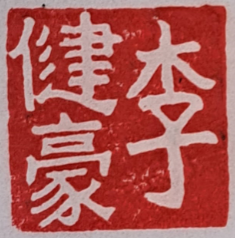How are Chinatowns formed? Sunset Park’s Chinatown is not so much a palimpsest, but marked with a porosity. The architecture of New York City can be surprisingly enduring, and the Municipal Archives’ tax photos help document their shifting occupancy and cultural lives.
A NYT article exploring the past life of Eighth Avenue opens with the typical multicultural sketch before pulling us into the one strand of heritage it places under the microscope: “The auto repair shops and the warehouses bearing signs in Chinese that line this side of the block are shuttered, and across the street the park known as the Dust Bowl is the site of an early-evening soccer match between local Hispanic teams.”1 In this case, it is the Scandinavian character of the neighborhood, alongside the Italian and Irish neighbors that have faded over time as Chinese – first Cantonese-speaking, and more recently from Fujian province – moved northwards along the avenue, towards ‘Little Norway’, and in the 1980s Lapskaus Boulevard came to be called ‘Little Hong Kong’.2 (At this juncture I find myself wishing those journalists had the instincts of Aaron Reiss and Denise Lu, who’d produced that map of Chinese signage, or at least eschewed the passive voice reportage. Tell me who christened this neighborhood, and how they came to learn about it!)
The cultural mélange of Sunset Park’s early re-culturation produces some striking moments, such as the reinvention of the Norwegian stalwart Atlantic Diner by a Chinese businessman as Wee Kee Restaurant, complete with a former employee managing the persuade the new management to serve kumpa, karbonade kaker, or fish pudding for older European customers, at least for the 10 or so years it would survive as New York’s only Norwegian-Chinese restaurant.
Today’s gentrification takes place not with one ethnic group replacing another but instead a class-based displacement with new generations of wealth from the mainland. Commercially, this is evident even in Manhattan’s Chinatown, as I’ve previously suggested, and Despite Sunset Park’s shift from Cantonese to Fujianese, the neighbourhood continues to be a largely working-class one, with many commuting to service and garment factories. Online, I come across one book written 35 years ago, at a point in time where it was not certain that Sunset Park would become Chinese. Here, ‘housing expert’ Louis Winnock (as he is remembered) casts this as another neighborhood standing tiny and isolated amidst the current of changes.3
“Sunset Park is a speck in a vast social and economic universe. Its decline and its recovery were the consequences of events over which it had small control. Easy mortgage credit and new broad highways lured its people away … Sunset Park will have no more control in shaping its future. That is not to say that a self-aware community is a helpless pawn … [b]ut in the end, the part of its destiny that a neighborhood can influence through discretionary acts is miniscule in comparison with the immensity of forces beyond its reach.”4
The heavy metaphor here belies what David Harvey reminds us, in “The Right to the City”, of urbanization as a class phenomenon in his call for “a right to change ourselves by changing the city”.5 Winnock is neither utopian nor socialist, having advised both the Ford Foundation and worked in the New York City Planning Commission and the Housing and Redevelopment Board during its postwar boom phases, but it is clear that he has little answer to gentrification (as Harvey has been left perplexed too, at least according to an anecdote I must have heard in this class). Declensionist narratives are not just civilizational, but applied to the micro-scale of a neighborhood, they transform neighborhood reputations “from an enduring magnet for migrant workers to a former locus of immigrant culture”, as Samuel Stein has written about the Tenement Museum of the Lower East Side.6 The Sunset Park I’ve experienced is anything but a speck in both the cultural universe of New York Chinese life or real estate forces. One only needs to take a walk and go in hungry.
- McLoughlin, Tim. “The Danes’ New Amigos.” The New York Times, February 14, 2014, sec. New York. https://www.nytimes.com/2014/02/16/nyregion/the-new-amigos-at-the-danish-athletic-club.html.
↩︎ - Blogposts contain their own little obituaries. Brooks of Sheffield. “Memories of New York’s Only Chinese-Norwegian Fusion Restaurant.” Lost City (blog), February 25, 2007. http://lostnewyorkcity.blogspot.com/2007/02/memories-of-new-yorks-only-chinese.html. ↩︎
- Oser, Alan S. “Louis Winnick, Housing Expert, Dies at 85.” The New York Times, July 30, 2006, sec. Obituaries. https://www.nytimes.com/2006/07/30/nyregion/louis-winnick-housing-expert-dies-at-85.html. ↩︎
- Winnick, Louis. New People in Old Neighborhoods: The Role of New Immigrants in Rejuvenating New York’s Communities. New York: Russell Sage Foundation, 1990.
↩︎ - Harvey, David. “The Right to the City.” New Left Review, no. 53 (October 1, 2008), p. 25.
↩︎ - Stein, Samuel. “Slum Preservation.” New York Review of Architecture, December 13, 2024. https://nyra.nyc/articles/slum-preservation.
↩︎

Leave a Reply